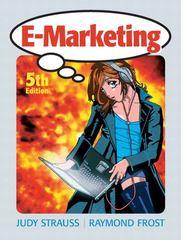


These Is the question
3. Clemens is a starving student. To save money for tuition, books, and beer he chooses to eat only steak or macaroni and cheese. Clemens is a tutor and has an annual income of $7,000. This year, Clemens has received a scholarship for $3,000. Additionally, the price of macaroni and cheese has also decreased by $0.10 per box since last year, yet Clemens is buying less macaroni and cheese this year than he did during the previous year. For Clemens: (1) macaroni and cheese is a Giffen good. (2) steak is an inferior good. (3) macaroni and cheese is a normal good and the substitution effect is larger than the income effect. (4) macaroni and cheese is an inferior good and the income effect is larger than the substitution effect. 4. Which of the following characterizes the consumption bundle selected by an optimizing consumer? (1) The ratio of total utilities is equal to the relative price. (2) The ratio of income to price equals the marginal rate of substitution. (3) The marginal rate of substitution is equal to the relative price. (4) The marginal rate of substitution is equal to income. THE NEXT QUESTION IS BASED ON THE FOLLOWING GRAPH: Quantity A of Potato Chips B Quantity of Diet CokeConsider a twoperiod model of a small open economy with a single good each period and no investment. Let preferences of the representative household be described by the utility function U{C1, C2} = p C1 + [5 p C2 The parameter [3 is known as the subjective discount factor. It measures the consumer's degree of impatience in the sense that the smaller is B, the higher is the weight the consumer assigns to preserrt consumption relative to future consumption. Assume that B = U11. The representative household has initial net foreign wealth of {1 + rlt I] = 1, with r = [1.1, and is endowed with Ell = 5 units of goods in period 1 and 02 = ID units in period 2. The world interest rate paid on assets held from period lto period 2, r * , equals 16% {i.e., r * = [1.1] and there is free international capital mobility. 1. Calculate the equilibrium levels of consumption in period 1, C1, consumption in period 2, C2, the trade balance in period 1, T El, and the current accourrt balance in period 1, CA1. 2. Suppose now that the government imposes capital corrtrols that require that the country's net foreign asset position atthe end of period 1 be nonnegative {3* 1 a D}. Compute the equilibrium value of the domestic interest rate, r1, consumption in periods 1 and 2, and the trade and currerrt account balances in period 1. 3. Evaluate the effect of capital corrtrols on welfare. Specically, nd the level of utility under capital controls and compare it to the level of utility obtained under free capital mobility. 4. Forthis question and the next, suppose that the country experiences a temporary increase in the endowment of period 1 to El = '3, with period 2 endowment unchanged. Calculate the effect of this output shod: on C1, C2, T Bl, CA1, and r1 in the case that capital is freely mobile across courrtries. 2. Given a market for some good: characterized by the following equations of supply and demand below. TWhat are the economic eects of a $5 per unit tax levied on consumers? Illustrate with a diagram. Show work. P = so 2Qd (1) P P = 20 + 3o. (2) Original Price Original Output New Price Consumer E5135 Hm Output New Price Producer Receives Burden to consumer Burden to producer Tax Revenue












